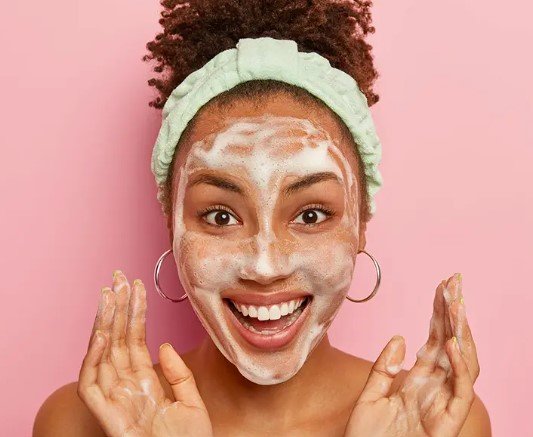Ingredients to Avoid in DIY Blackhead Treatments: Baking Soda, Lemon Juice, and Toothpaste vs. Safe Alternatives: Clay, Honey, and Tea Tree Oil
Summary
- Using DIY blackhead treatments can be beneficial, but certain ingredients should be avoided to prevent skin damage.
- Ingredients such as baking soda, lemon juice, and toothpaste can be too harsh on the skin, causing irritation and dryness.
- Opt for gentle ingredients like clay, honey, and Tea tree oil to effectively treat blackheads without harming the skin.
Introduction
Blackheads can be a pesky skin concern that many people struggle with. While there are plenty of DIY treatments available online, it's important to be cautious of the ingredients you use. Some ingredients can be too harsh on the skin and may end up causing more harm than good. In this article, we will discuss what ingredients should be avoided in DIY blackhead treatments to prevent damaging the skin.
Harsh Ingredients to Avoid
When it comes to DIY blackhead treatments, there are certain ingredients that should be avoided due to their harsh nature. These ingredients can strip the skin of its natural oils, cause irritation, and even lead to more blackheads. Here are some common ingredients to steer clear of:
1. Baking Soda
Baking soda is often touted as a natural exfoliant that can help unclog pores and remove blackheads. However, baking soda is a highly alkaline ingredient that can disrupt the skin's pH balance. This can lead to dryness, irritation, and even a compromised skin barrier. Using baking soda on the skin regularly can cause more harm than good.
2. Lemon Juice
Lemon juice is a popular ingredient in DIY skincare due to its brightening properties. However, lemon juice is highly acidic and can be too harsh on the skin, especially when used in high concentrations. Applying lemon juice to the skin can cause sensitivity, redness, and even chemical burns. It's best to avoid using lemon juice in DIY blackhead treatments.
3. Toothpaste
Some people swear by using toothpaste as a spot treatment for blackheads. While toothpaste may have drying properties that can help reduce oiliness, it also contains ingredients like menthol and fluoride that can be irritating to the skin. Toothpaste is not meant to be used on the skin and can cause more harm than good in the long run.
Safe and Effective Alternatives
Instead of using harsh ingredients that can potentially damage the skin, opt for gentle alternatives that can effectively treat blackheads without causing irritation. Here are some safe and effective ingredients to include in your DIY blackhead treatments:
1. Clay
Clay is a popular skincare ingredient known for its ability to absorb excess oil and impurities from the skin. Clay masks can help unclog pores, reduce blackheads, and leave the skin feeling clean and fresh. Look for clays like kaolin or bentonite, which are gentle on the skin and won't cause irritation.
2. Honey
Honey is a natural humectant that can help hydrate the skin while also possessing antibacterial properties. Using honey in DIY blackhead treatments can help soothe the skin, reduce inflammation, and prevent further breakouts. Opt for raw, organic honey for the best results.
3. Tea tree oil
Tea tree oil is a powerful essential oil that has antimicrobial and anti-inflammatory properties. When used in small concentrations, Tea tree oil can help reduce blackheads and prevent acne breakouts. Be sure to dilute Tea tree oil with a carrier oil before applying it to the skin to avoid irritation.
Conclusion
While DIY blackhead treatments can be a cost-effective and convenient way to address skin concerns, it's important to be mindful of the ingredients you use. Harsh ingredients like baking soda, lemon juice, and toothpaste can do more harm than good to the skin, causing irritation and damage. Instead, opt for gentle alternatives like clay, honey, and Tea tree oil to effectively treat blackheads without compromising the skin's health. By choosing the right ingredients, you can achieve clear, smooth skin without the risk of irritation or damage.

Disclaimer: The content provided on this blog is for informational purposes only, reflecting the personal opinions and insights of the author(s) on the topics. The information provided should not be used for diagnosing or treating a health problem or disease, and those seeking personal medical advice should consult with a licensed physician. Always seek the advice of your doctor or other qualified health provider regarding a medical condition. Never disregard professional medical advice or delay in seeking it because of something you have read on this website. If you think you may have a medical emergency, call 911 or go to the nearest emergency room immediately. No physician-patient relationship is created by this web site or its use. No contributors to this web site make any representations, express or implied, with respect to the information provided herein or to its use. While we strive to share accurate and up-to-date information, we cannot guarantee the completeness, reliability, or accuracy of the content. The blog may also include links to external websites and resources for the convenience of our readers. Please note that linking to other sites does not imply endorsement of their content, practices, or services by us. Readers should use their discretion and judgment while exploring any external links and resources mentioned on this blog. Content in this blog is copyright protected, please do not repost or embed content without prior written permission.